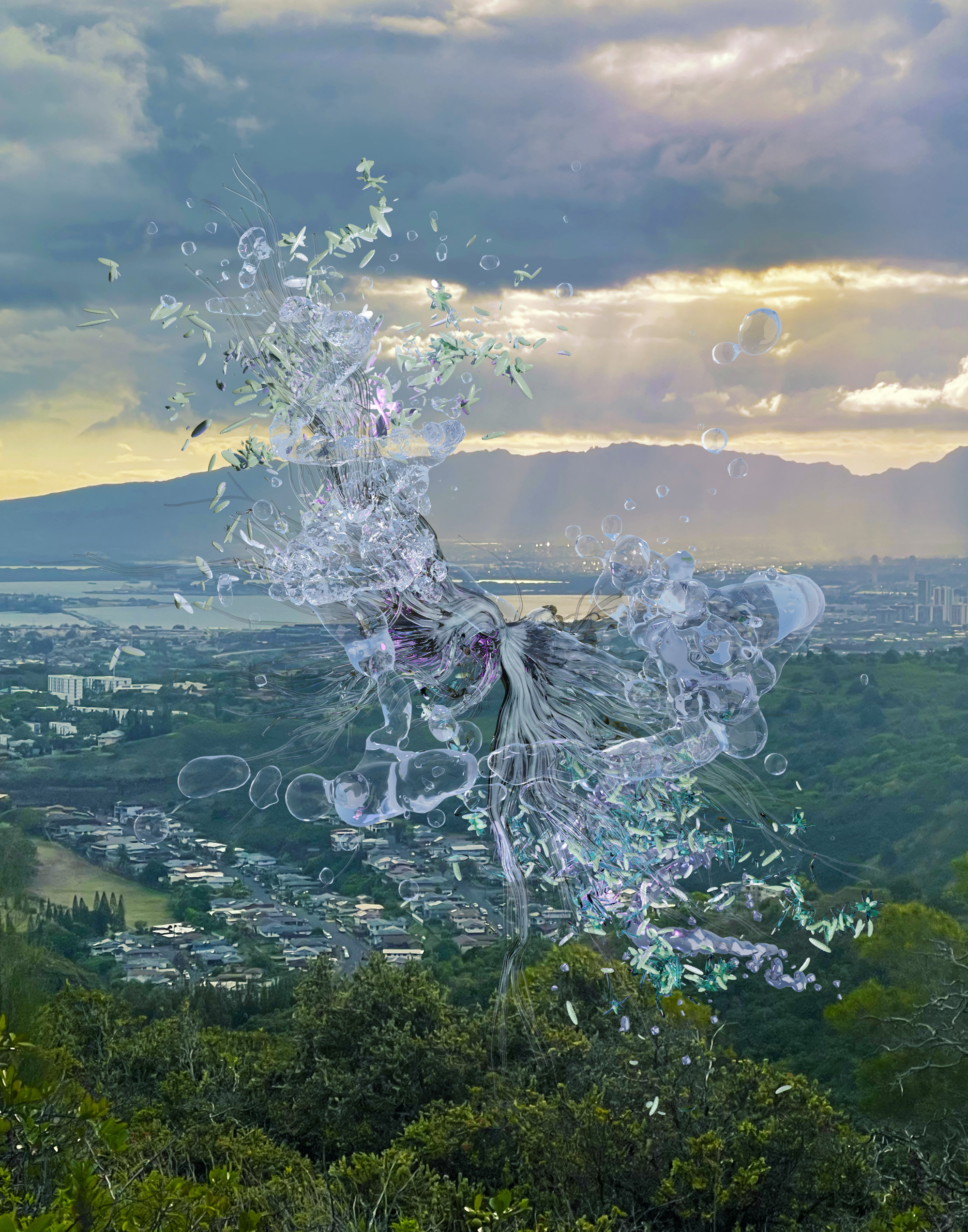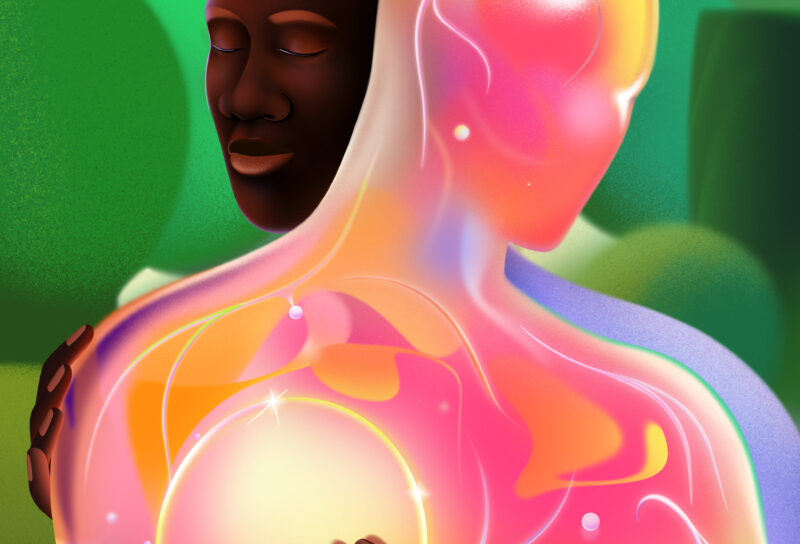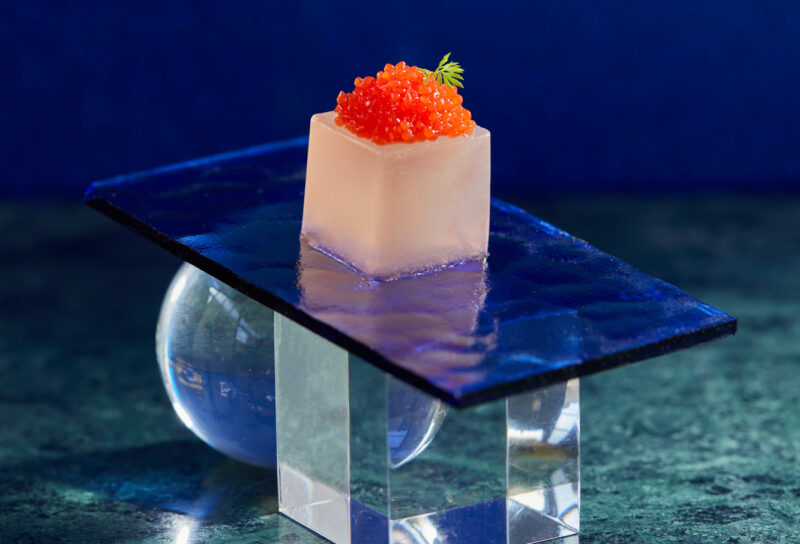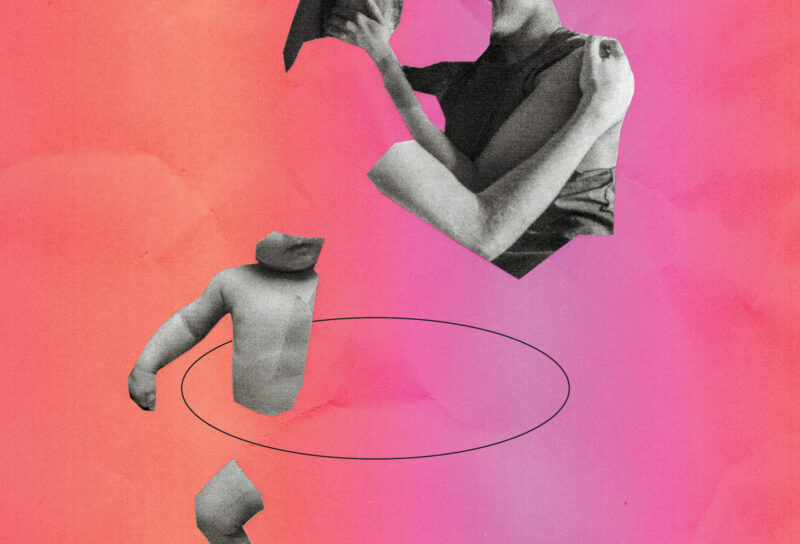Waste is a luxury. It’s an excess you can only afford by ignoring its cost. At the societal level, that cost is an unsustainable future. As is true for many island nations occupied by industrial powers, Hawai‘i’s production of waste is growing exponentially.
Fifty generations ago, pre-contact islanders living in the most remote archipelago on Earth struggled to imagine an industrial structure that takes from one energy system without replenishing another. Their usual world of transoceanic voyaging, island-scale agriculture, and sustainable fishing practices relied on resources flowing cyclically. They understood that mismanaging those finite resources, even slightly, could collapse the entire ecosystem. At least for humans.
Today in the Pu‘uloa (Pearl Harbor) region of the island of O‘ahu, U.S. military officials are scrambling to address the sudden release of thousands of gallons of jet fuel in the drinking water system serving multiple military bases. As it turns out, 80-year-old tanks at a fuel storage facility in Kapūkakī, known today as Red Hill, have been leaking petroleum contaminants into O‘ahu’s single most important freshwater aquifer for decades. It’s a public health crisis: Dozens of residents have reported “unexplained illness.” And though critics of the government have rightly pinned the blame on the military, they’ve yet to offer a solution.
Red Hill’s jet fuel problem dates back to the Roosevelt administration in the aftermath of World War II. O‘ahu’s above-ground fuel storage tanks at Pearl Harbor were vulnerable to attack. The administration was concerned, and in 1943 they built an even bigger underground facility that would be safe from an enemy aerial attack. The Red Hill Bulk Fuel Storage Facility holds 250 million gallons of fuel and supports the lion’s share of U.S. military operations in the Pacific. Discussion is underway to remove the fuel from these underground tanks and prevent further contamination to water sources within its proximity.
As global custodians, proponents of circular economics, and Indigenous futurists, we believe it would make more sense to reduce, reuse, recycle, and repurpose the Red Hill jet and ship fuel complex to empower climate resilience in the Pacific. Rather than leaving Red Hill as a rusting vestige, a memorial of the military industrial complex, we ask what opportunities might lie ahead for synthetic biology in the Pacific.
The history of industrial waste in Hawai‘i tells us about the problem, but the history of Hawai‘i before industrial waste can inform the solution. What happens when ancestral lessons collide with groundbreaking advances in synthetic biology? For Hawaiians to overcome the industrial structures that wreck our ecosystem, we must look to new ways of fusing technology with Indigenous futurism.
1. The Spoils of War
Industrial-scale pollution follows colonial violence. The first scrap of industrial pollution landing on Hawaiian soil was probably a cannon ball, or maybe a stray musket ball, discharged by a Royal Navy officer shortly after the arrival of HMS Resolution and Discovery and Captain James Cook in 1778. Over the next few hundred years, industrial-scale pollution accumulated, threatening the health, life, and safety of one of the most biodiverse places on our planet. King Kamehameha I, the founder and first ruler of the Kingdom of Hawai‘i, was one of the first Indigenous futurists in Hawai‘i’s post-contact history. Kamehameha is credited with recognizing the potential of emerging technologies like steel and gunpowder. He had cannons installed on his wa‘a, or voyaging canoe. And his embracing of technology empowered the community to fulfill the prophecy of his birth — unifying the Hawaiian Islands.
Later, in 1887, King David Kalākaua would be forced to sign a new treaty at gunpoint, in an attempt to undermine Native Hawaiian sovereignty. This document would be nicknamed the “Bayonet Constitution.” The guns surrounding Kalākaua on that fateful day belonged to members of volunteer militias nicknamed the “Honolulu Rifles,” comprising largely white settlers. Kalākaua’s sister and successor as monarch, Queen Lili‘uokalani, later speculated that Kalākaua would have been killed had he not signed the new constitution. No industrial pollution, no Bayonet Constitution, no illegal overthrow of the Kingdom of Hawai‘i.
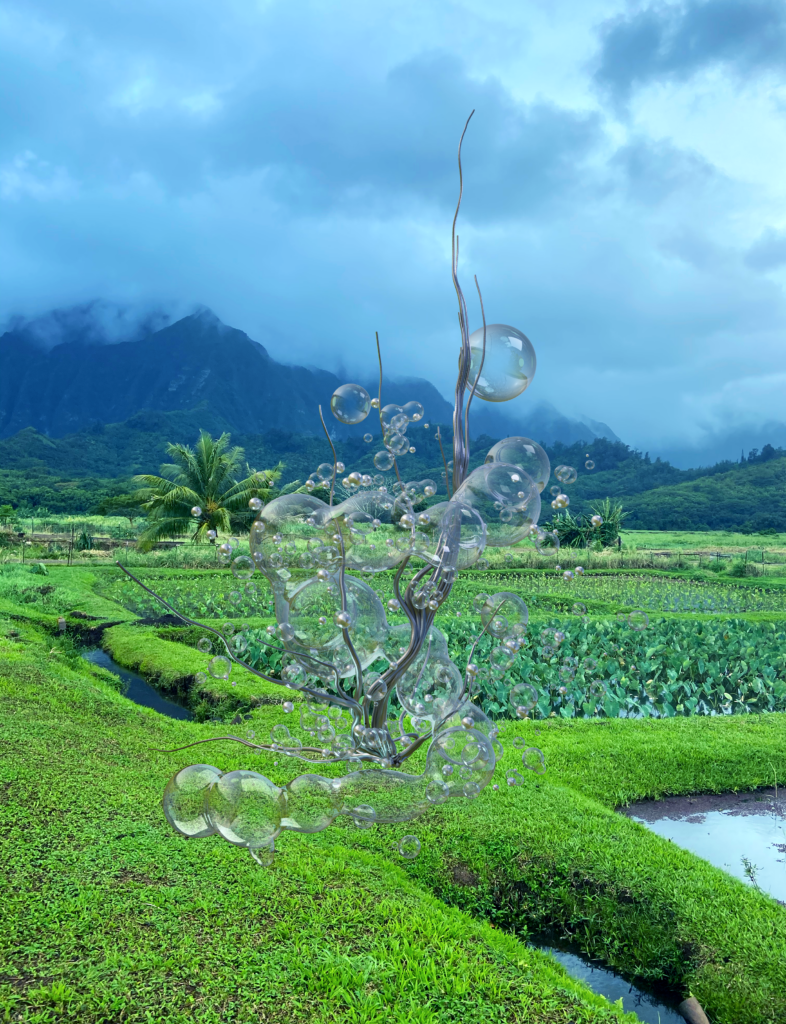
He Wai E Mana re-envisions our water systems as they connect and give life within Lo‘i Kalo and Ahupua‘a systems, located at He‘eia, Kāne‘ohe (Kāko‘o ‘Ōiwi).
Other heinous acts of violence on the Hawaiian islands include bombing one of Hawai‘i’s lesser-known islands, Kaho‘olawe. In 1965, the U.S. Navy conducted experiments to determine the blast resistance of ships. Three tests off the coast of Kaho‘olawe subjected the island and a target ship to massive explosions, with 500 tons of TNT repeatedly detonated on the island near the target ship. The warship was damaged, but not sunk. Kaho‘olawe, on the other hand, suffered a crack in the caprock, causing its groundwater to vanish into the ocean and making it uninhabitable to this day.
Sixty-three years after Hawai‘i’s statehood, that legacy continues. For example, the Rim of the Pacific Exercise, the world’s largest international maritime warfare exercise, leaves industrial-scale pollution in its (literal) wake during June and July every other year in the waters in and around Hawai‘i. RIMPAC decimates pristine ecosystems throughout the Pacific with anti-submarine ballistics, amphibious operations, humanitarian assistance training, missile shots, and ground force drills.
On the Big Island of Hawai‘i, non-military institutions also pollute the landscape on an enormous scale. Since 1970, elite research institutions like Harvard, the University of California system, NASA, and the Smithsonian Institution have built 13 massive observatories on top of Mauna Kea, the most sacred site in Native Hawaiian culture. Native Hawaiians have opposed each one for both cultural and environmental reasons. Today, several of those 13 telescopes are defunct, due to wear and tear, planned obsolescence, and to make space for newer, larger telescopes like the state’s planned Thirty-Meter Telescope. In the interim these vestigial technologies are dilapidated, rusting observational turrets leaching harmful heavy metal contaminants into the largest freshwater resource on the Big Island — one of the most biodiverse islands on our planet.
The artillery, the war-game shrapnel, the telescopes, and the fuel tanks will all outlive their users. Their environmental footprint can’t vanish without human intervention. Red Hill’s fuel tanks offer an opportunity to rewrite the legacy of Hawai‘i’s industrial waste.
Imagine Red Hill’s industrial waste as a potential source of climate resilience. The jet fuel complex could find renewed use as a “bio-mine” to identify bacteria that have the potential to digest petroleum-based jet fuels into environmentally friendly byproducts.
This reimagining of Red Hill builds on our ancestors’ deep relationship with the ‘āina, or land. It’s an ancient relationship rooted in industrial symbiosis — a relationship that has yielded thousands of years of abundance and innovation, in the form of technology that is simultaneously sustainable and invisible to the casual onlooker.
2. Ahupua‘a Advice
To understand what the problem of Red Hill offers Hawai‘i, it helps to peer deeper into the island’s past. Over the course of 1,200 years, Hawaiians developed unique horticulture technology and governance strategies based on stratified Ahupua‘a land divisions. These divisions fed snow melt to terraced taro patches through irrigation routes. They provided valuable bacteria and phytonutrients to creatures in fish ponds and allowed those fish to populate the inner reef system and, once mature, the Pacific Ocean. These vertically integrated systems were highly organized and politically complex to produce zero waste. They supported a huge labor force and provided a sustainable supply of food for the population.
In the 15th century, Chief ‘Umi-a-Līloa, son of the great High Chief Līloa, disgusted by lawless governance of land, took control and began dividing it into sustainable land divisions. According to evidence from oral histories, the Chief divided the land based on natural geographical boundaries to promote order and peace. Each land division was governed by a trusted chief. These slices of the island, or ahupua‘a (named after the severed pig heads used to delineate their boundaries) generally ran from the top of the local mountain (mauka) to the shore of the ocean (makai), and followed the boundary of stream drainage.
Each level of the Ahupua‘a system was sustainably cultivated and maintained. Remains of fish were used to enhance soil as fertilizer and went to supercharge meadows of sweet potatoes — waste from one realm powered another. The key was connectivity, balance, and circularity.
This concept — known as “industrial symbiosis” — is now a mainstay of urban planning almost everywhere in the world. Think building a Dutch cookie bakery next to the Heineken brewery — byproducts such as yeast flow seamlessly from one building to the next, reducing waste while enabling the creation of delicious croissants and vats of beer. In the 1950s, scarcity of resources worldwide and an increase in commodity prices resulted in demand for more circular approaches to production in Denmark. The town of Kalundborg reimagined the exchange of materials, water, and energy streams between commercial partners in its city. Today, Kalundborg has increased resilience and strengthened its economic systems, all the while reducing the environmental impact and expenses, resulting in a surplus of 24 million euros every year.
What happens when ancestral lessons collide with groundbreaking advances in synthetic biology?
Our planet is covered by an unfathomable number of microorganisms that have colonized nearly every ecosystem. Some microbes have found ways to survive in systems that are yet to be discovered by humankind. It is here that our Hawaiian heritage and scientific training come together, for our ancestors were early practitioners of what is now called industrial symbiosis and industrial ecology.
“I ka wā ma mua, ka wā ma hope” — as we take advice from our ancestors, we look to our past for solutions that couple industrial symbiosis, circular economics, and synthetic biology to promote climate resilience.
3. “Eat What Get”
It wasn’t long ago that our ancestors arrived on wa‘a, double-hulled voyaging canoes, from Tahiti and the Marquesas Islands, toting life-sustaining plants. Those “canoe plants” had edible roots, leaves, and fruits. Others could make cordage, fabrics, and materials that could be engineered to receive wind and steady masts that enabled the greatest voyages in human history. Medicinal plants and gourds functioned as containers to hold fresh water, maintaining our health and well-being. Canoe plants and their genomes were shaped over time through natural selection, preservation, and domestication. They were the key components for the technology that enabled our ancestors to discover some of the most remote places on Earth. And the first thing our kūpuna did when they arrived was introduce them in the soil to ensure our survival.
Think of Hawai‘i’s microbes as “canoe microbes.” The microbial world around us warrants the same level of care and attention as our ancestors’ canoe plants. Red Hill’s enormous fuel tanks on O‘ahu are a vestige of our islands’ colonial past, present, and future. Yet with these canoe microbes in mind, Red Hill’s failing infrastructure — its waste — is an opportunity. At the time of writing, 250 million-gallon fuel tanks at Kapūkakī are being drained of jet fuel. But the next steps for the complex are unclear.
In the spirit of industrial symbiosis and innovation, we believe that the empty fuel tanks and soil surrounding the tanks should become what we like to think of as a series of bio-mines, like the canoes which our ancestors filled with life-changing plants. Extreme ecosystems will force microbes within the area to learn how to survive off of what is available. In modern science, we call these creatures “extremophiles.” In Hawaiian, there is a saying that we often “eat what get.” Extremophiles eat what get. They evolve to consume substances that otherwise kill most organisms elsewhere.
The soil bacteria surrounding and within the Kapukākī fuel tanks likely include native extremophiles. Because bacteria are single-celled organisms that reproduce at a fast rate, they have the capacity to evolve rapidly over time, in comparison to animals. By subsisting in extreme environments and accumulating mutations in their genomes, these bacteria produce new versions of themselves that reflect the biological niches they inhabit — that includes niches where jet fuel has been leaking into soil over the course of 80 years in Kapukākī.
Biologists could sequence the DNA of these microbes to identify key biological mechanisms useful for the world. For example, fuel-eating extremophiles could contain genetic secrets that help remedy large-scale oil spills around the world. Within the genomes of these highly specialized beings lie clues about how to turn our waste into viable and sustainable energy sources.
We may recognize some of the culprits from elsewhere. For example, a fungus discovered in 2020, Pisolithus arhizus (dead man’s foot), lives in a Yellowstone geyser and contains a bacterium that consumes fossil fuels. Scientists are still learning about P. arhizus and how its microbiome actually works: One theory is that microbes inside are able to consume the toxic junk, such as arsenic, inside the fungus and convert it into energy. Fungi like this offer a world of opportunities for waste remediation. However, less than 1% of the estimated 4 million fungi that exist on our planet have had their genomes characterized — let alone the multitudes of bacteria that live symbiotically within them — leaving us to wonder what other secrets remain undiscovered.
Hawai‘i can also benefit from characterizing native bacteria locally. Our bacteria represent a wealth of untapped information. For example, fumaroles are openings in or near volcanoes that spew out hot sulfurous gases. These ancient toxic heat vents provide an ideal heat and moisture regimen for extremophiles. On the Island of Hawai‘i, fumaroles are scattered across the southeastern portion as a result of volcanic activity from Kīlauea Crater and Pu’u ‘Ō’ō Vent. These local canoe microbes might provide valuable insights into complex chemical procedures for the metabolism or digestion of harmful chemicals and waste products, like jet fuel and plastic.
Scientists recently discovered a bacterium called Ideonella sakaiensis 201-F6, an extremophile capable of metabolizing plastics like polyethylene terephthalate (PET). PET is one of the most commonly used plastics in the water bottle industry. This extremophile can metabolize it — and convert it into fuel such as methane gas or other less environmentally harmful natural gases that can be used as energy resources. If we harness this genetic superpower, we can help turn wasted resources into alternative energy.
We could alter the genomes of canoe microbes that are collected in the soil surrounding the leaky tanks at the Kapukākī bio-mine. The site could enhance the hydrocarbon-eating potential to restore our aquifer, benefit other spill sites around the world, and deter capitalist bio-prospectors by simultaneously protecting the intellectual property for our community, all the while feeding our new synthetic biology based circular economy. At Red Hill, this vision of an Indigenous future could operate at an unprecedented scale.
Red Hill’s environmental crisis gives us the opportunity to dream about an enormous bioreactor the size of the fuel tank complex — all 250 million gallons of it. Bioreactors are vessels that house a chemical process involving organisms or biochemically active substances derived from those organisms. Each tank in this bioreactor could stand 250 feet tall (enough volume for each to store within it the Aloha Tower) with 20 tanks total.
This scale would make it the largest bioreactor in the Pacific. We could fill it with a variety of locally sourced genome-edited canoe bacteria, similar to I. sakaiensis — bacteria that consume plastics. A bioreactor of this scale could metabolize all 79,000 tonnes of plastic in the Great Pacific Garbage Patch in less than a year. All that mess, gone in a year.
4. An Indigenous Future
Our community has historically resisted biological technologies. Hawai‘i is home to one of the most biodiverse ecosystems on planet Earth — including 10 out of 14 climate zones, the largest variety of microclimates and soil profiles in the world, and every renewable energy resource known to humankind. Native Hawaiians want to protect that biodiversity, so we are cautious about introducing genetically modified organisms and extremophile bacteria.
In 1992, when Cornell University and the State of Hawai‘i genetically modified rainbow papayas on the island, the Hawaiian community protested. The moment resulted in multiple international anti-GMO campaigns and the first national GMO labeling law. In 2009, researchers at the University of Hawai‘i, Manoa attempted to sequence the genomes of taro, or kalo, which many in the Native Hawaiian community believe to be one of our first ancestors. That didn’t go well. Our community protested GMO crops including taro and lobbied for new laws that would have prohibited the creation of “genetically engineered and recombinant DNA taro” — making it unlawful for “any person to test, propagate, cultivate, raise, plant, grow, introduce, or release genetically engineered or recombinant DNA kalo.”
Any effort to introduce genetically modified organisms to Hawai‘i must take great care to respect the cultural and historical context. But that need for caution does not negate the technology’s potential. As Native Hawaiians and biologists, we are prepared to work with our community to offer culturally sustainable options and build consensus around solutions in-line with Native Hawaiian values, community aspirations, and the mo‘oleo, or history of horticulture and the introduction of new species in the Pacific.
One way to build consensus amongst our community is to provide a platform for our community to envision the future. What is the future they want to see? We should work with our community to center the scientific questions we would like to prioritize: How would you like to use synthetic biology to protect or maintain our ‘āina and moana? This way, we can work toward community-driven solutions to these challenges, imagining futures grounded in collaboration, decolonization, and Indigenous resurgence.
People generally imagine the future in the language of capitalism by focusing on quarterly earnings rather than forecasting the future of sustainability; prioritizing extraction, exponential growth, and optimizing every system and relationship for profit — including our relationship with the natural world.
Indigenous futurism, on the other hand, offers an opportunity to imagine our future based on Indigenous value systems: trading a linear or exponential trajectory for a circular one rooted in industrial symbiosis and sustainability. Indigenous peoples are, after all, original environmental stewards with 10,000 years of experience. An Indigenous future can imagine a world without waste.
Red Hill should be only the beginning. Hawai‘i’s dilapidated sugar mills can become biodigesters. Industrial dump sites can become research labs aimed at discovering waste-reducing extremophiles. Methylacidiphilum fumariolicum, for example, is an acid-loving microbe discovered in volcanic mud; Deinococcus radiodurans is an extremophile capable of digesting uranium found in nuclear waste sites. Imagine deconstructing abandoned military bases, coastal armories, and barracks and recycling the remnants into the bedrock for artificial reef systems. Offshore oil rigs could be repurposed for the foundation of artificial islands for climate crisis refugees to practice and revitalize their cultures and futures.
As we reimagine our relationship with the waste of war — and our war with waste — we have the potential to refurbish abandoned industrial infrastructure in colonized nations around the world, to live in harmony with the ‘āina and the moana, just like our kūpuna did long before the military arrived.
